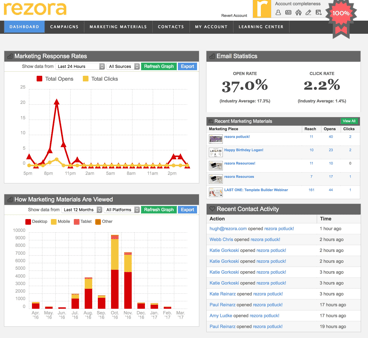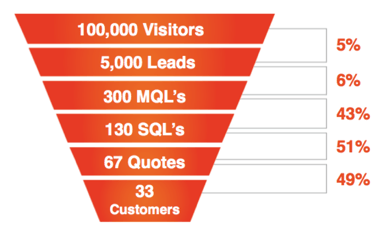KPIs, or key performance indicators, are carefully selected and reported metrics that determine whether or not your marketing strategy is helping you achieve your business goals. While determining which KPIs you want to focus on depends on what industry you’re in and what your specific goals are, they should usually be quantitative, and always be actionable.
Beyond all the acronyms, KPIs are not so bad. On top of being a crucial part of your business strategy, they can actually be a lot of fun to watch and work with. Chances are, you’re already at least monitoring these quantities. But you should have some official way of measuring them so you can stack them against your marketing goals and see how your marketing is performing. Here are 4 KPIs you should be measuring.
1. Website Traffic
For most B2B businesses, your website is your greatest marketing tool and biggest lead generator, so it’s important to make sure your website is getting enough visitors to generate these leads. How can you roughly know how many visitors this is? We’ll discuss further in our 3rd KPI, Conversion Rates.
2. Email Open and click through rates
These metrics are crucial in knowing how your emails are performing. If you have high open and click through rates, it’s likely that your emails are doing their job. If you have a low open and click through rate, you may need to evaluate and revise the content of your emails, or the audience you’re sending to.
3. Conversion rates
This encompasses several different metrics. We want to know what our website (or landing page) is converting at, and how many leads we’re generating with that certain amount of website visits. As you can see, it all starts by depending on our first KPI, website traffic. The diagram below from Vital Design provides a nice visual overview.
If the quality of your website’s traffic is high, it should be converting a high percentage of visitors into
leads (basically, someone who has filled out a form on your website showing further interest, or requesting further information).
 From there, how many convert to MQLs, or marketing qualified leads (leads that are more interested in your product than other prospects are, based on specific demographics, activities, or behaviors)?
From there, how many convert to MQLs, or marketing qualified leads (leads that are more interested in your product than other prospects are, based on specific demographics, activities, or behaviors)?
And from those MQLs, how many convert to SQLs, or sales qualified leads (leads that are further along in their buyer journey, have specific questions, and are ready for some one-on-one time with your sales department)?
Of those SQLs, how many move on down the funnel to the quote/proposal stage?
And lastly, how many leads that are in the quote/proposal stage actually convert to customers by buying your product or service?
From here, we can work backwards through the funnel to see how many website visits we need in order to generate X (goal) amount of customers.
4. Social Traffic
The number of followers and subscribers you have is a great indicator of brand awareness. How many customers are you acquiring through your social channels? With this knowledge in mind, can you set goals to raise these numbers across the board?
You should have some kind of integrated reporting system that tracks and dashboards these metrics, and thanks to the technology Gods, there are tons of different programs and software made just for that. The types of reports and metrics you’re looking to generate will depend on what business you’re in, and what your goals are (if you’re looking for somewhere to start, this article includes a great list of some marketing dashboard options ) but no matter which KPIs you find most valuable to your business, make sure you’re setting goals based off of those KPIs and tracking their performance so you can see how successful your marketing strategy is.



